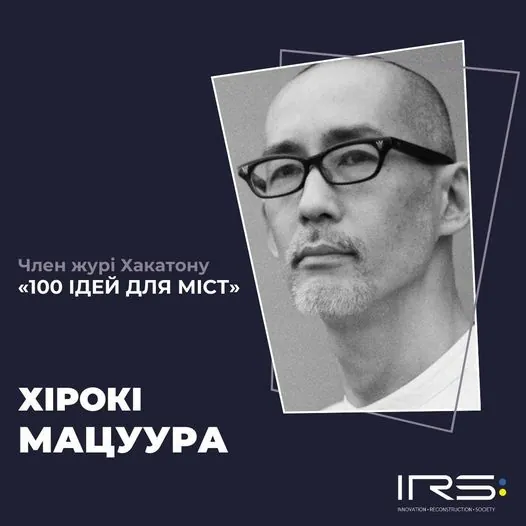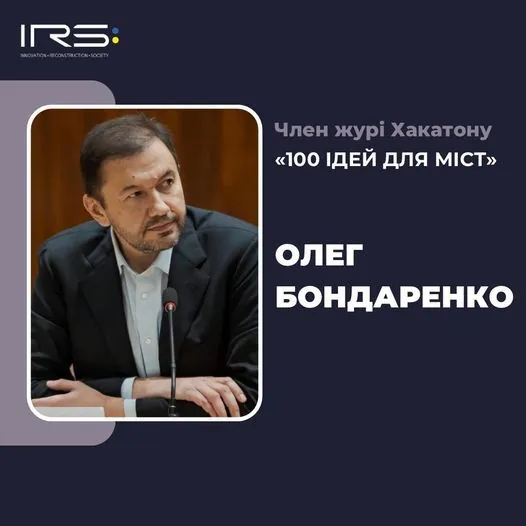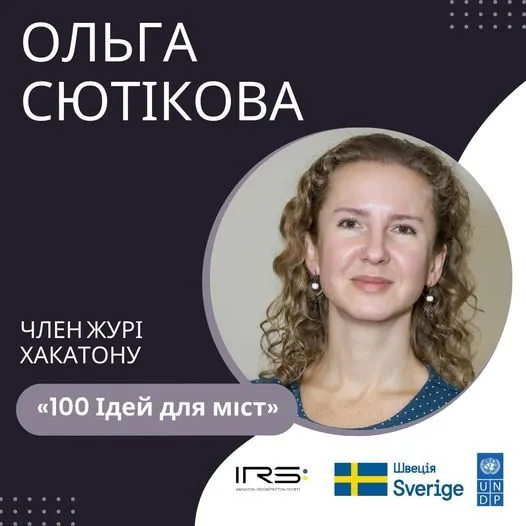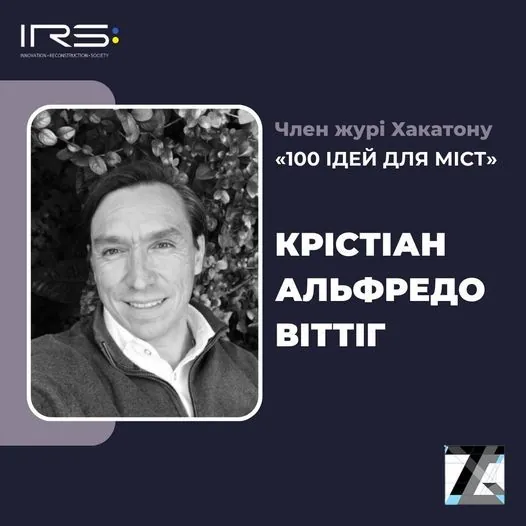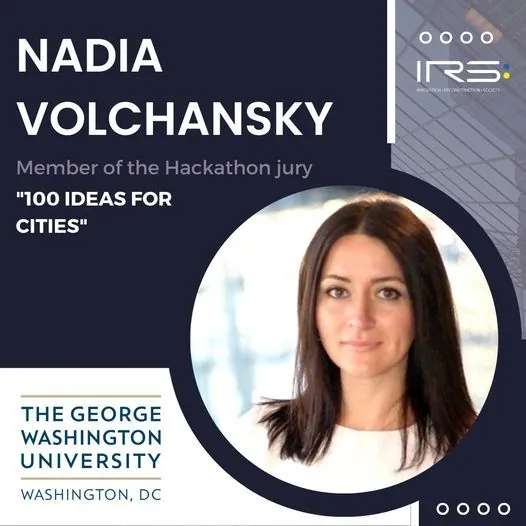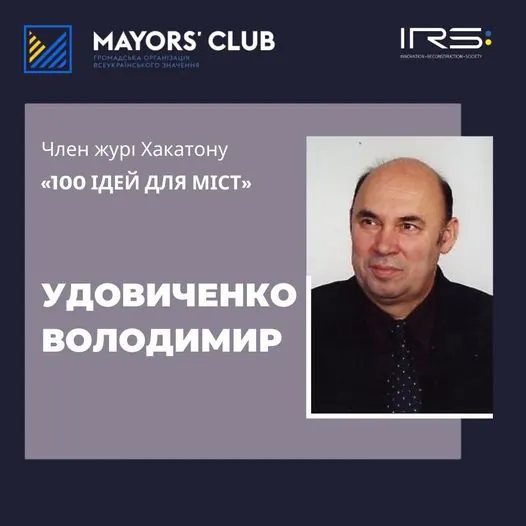Voting results at the "100 Ideas for Cities Hackathon": innovation, impact, and implementation prospects
Kyiv • UNN
The winners of the "100 Ideas for Cities Hackathon" have been announced. The jury evaluated projects based on criteria such as alignment with community needs, feasibility, innovativeness, and social impact.

As part of the large-scale project "Hackathon 100 Ideas for Cities," the results are being summarized and winners are being determined. The official announcement is scheduled for November 8 in Kyiv, as part of the All-Ukrainian Forum of Mayors.
Details
The Jury included specialists from various fields, and the best ideas for the post-war reconstruction of Ukrainian cities have now been selected. The competition brought together architects, urban planners, community representatives, and international experts who jointly sought the most innovative and realistic solutions to address contemporary challenges. Each jury member shared their impressions of the process, which helped to form a holistic view of the future of urban reconstruction in Ukraine.
How the winners were determined
Iryna Yarmolenko, the author and executive director of the project, says:
"The process of selecting the winners was quite complex and multifaceted. We evaluated each project according to clearly defined criteria, such as relevance to community needs, feasibility, innovativeness, and social impact. Each of these aspects was important, as it was crucial not only to create beautiful concepts but also to understand how much they could genuinely change people's lives on the ground."
In addition, the jury dealt with a variety of projects, from small landscape concepts to large-scale urban solutions.
Our goal was to find a balance between ambitious projects and those that are already ready for implementation. We looked for projects that could be implemented in a short time, but which also have the potential to be scaled to other communities.
Key evaluation criteria
Each jury member had their own priorities when evaluating projects. For example, Christian Wittig, an international expert in architecture and urban planning, emphasizes the importance of social value and community engagement: "We evaluated not only the technical implementation or aesthetic aspect, but also how much the project would contribute to community integration. Cities are rebuilt not only through architecture, but also through the interaction of people, their participation in the reconstruction process. This helps cities preserve their identity and find new paths for development."
Innovation and the relevance of projects to modern challenges also played an important role. Luigi Fiumara, an architect from Italy, notes: "It was especially important for me to see how projects meet the needs of the new Ukrainian society - not only on a material level, but also on the level of soul and spirit. Projects that offer non-standard solutions for social and infrastructural problems stand out for their originality and potential to become a symbol of revival."
Olha Siutikova, UNDP environmental specialist, biotechnologist, focused on realism: "I always paid attention to how ready the project was for implementation in specific conditions. The war made its adjustments to the plans of many cities, so it is important that projects are not just innovative, but also correspond to modern realities."
Discussion and consensus building
The discussion process among the jury members was intense and at times emotional. Zoryana Tykhonchuk, who also served as the Head of the Jury Committee and Coordinator, emphasizes: "The discussions were lively, because each of us has our own view on what is a priority in reconstruction. This is natural, as everyone has different experiences and focus. However, this is precisely what makes our decisions balanced - as a result, we took into account both the social and architectural aspects of each project."
Such discussions helped the jury reach a common decision that takes into account the diversity of approaches.
We managed to find a balance between creativity and realism. Some projects required clarification and refinement, but it is important that a large percentage of them have great potential for implementation.

Zoryana Tykhonchuk and Iryna Yarmolenko
Implementation prospects
One of the key questions facing the jury was the practical implementation of the projects. Iryna Yarmolenko expressed optimism about this: "We have long since started negotiations with various organizations that could support the implementation of many projects. The Dream platform, with which we have been actively working since the start of the project, should also help attract the necessary resources, and here the active role of local self-government bodies is most important."
Christian Wittig also drew attention to the importance of social investments: "The projects we saw carry not only material innovations, but also hope for local communities. This is especially important for cities like Kreminna, Bakhmut, Mariupol, which are currently occupied but have huge potential for future recovery, and we wanted to support and preserve this hope within the framework of the Hackathon."
Community feedback
Zoryana Tykhonchuk notes that feedback from communities regarding the proposed projects is mostly positive.
"Local communities appreciate the attention to their needs and see real opportunities in these projects for infrastructure development and improving living conditions. It is important that the projects meet the specific needs of communities and are not detached from reality. Some communities even expected project documentation and estimates, but this is not possible within the framework of a Hackathon. The cost of project ideas ranges from 50 to 200 thousand UAH, while project documentation and estimates are already a full-fledged certified activity from 1 million and above."
This opinion is supported by other jury members. Olha Siutikova emphasizes: "Although the projects differ in scale and complexity, each of them is important for a specific community. We tried to objectively evaluate all aspects and at the same time take into account their specifics." Olha Siutikova even shared her impressions: "Among the projects there are real masterpieces. For example, the concept of Maria Prymachenko Park in Ivankiv or the project of a rehabilitation center in Poltava. They not only meet the needs of communities, but also have the potential to become new symbols of urban architecture."
Plans for the future
The next step after the "Hackathon" will be further cooperation with communities and investors to scale the best projects, and we still have over a hundred applications that architects did not choose for development this season. Iryna Yarmolenko summarizes: "We plan to continue active work on attracting investments and hope for support from international organizations. We would like to help communities at all stages - from preparing project documentation to practical implementation of solutions."
This hackathon has become an important stage on the path to the reconstruction of Ukrainian cities. The projects presented offer not only new solutions for infrastructure, but also innovative approaches to social revival. And most importantly, they give hope for a better future for many Ukrainian communities.
In subsequent publications, UNN plans to introduce readers to the developed projects in more detail.
About the "100 Ideas for Cities" Hackathon
One of the largest projects for the reconstruction of Ukrainian cities after the war is the "100 Ideas for Cities" Hackathon, organized by the Innovations and Reconstruction for Society (IRS) project and the NGO "Club of Mayors."
The Hackathon has already yielded significant results, gathering 63 developed architectural ideas for participating communities from all over Ukraine. Currently, 250 applications have been received from communities in 22 regions, which is about a hundred communities. Within the project, 139 architectural teams have been formed, 20% of which are from abroad: Belgium, Chile, Austria, Arab Emirates, USA, Italy, Netherlands, and Slovakia.
We, the participants and organizers of the project, face a responsible task - to implement several projects that are important not only for a separate community, but for all of Ukraine. We also plan to transfer unified solutions to the Office of the President and the Prime Minister, which can become the basis for the development of similar projects in many communities of Ukraine, including schools, kindergartens, ASCs, rehabilitation centers, memorials, sports infrastructure.
